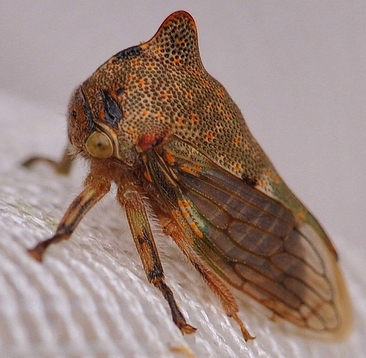 Platycotis vittata has a broad range across North America, distributed somewhat like a horseshoe (as described in BugGuide) along the east and west coasts and across the southern states. it is also found in Mexico and Brazil. Various species of oak, (Quercus spp) serve as hosts. They rarely are in numbers great enough to be a pest. They have five nymphal instars and there are observations of adult females standing guard over colonies of these nymphs, repelling predators. I love that mental image! We have only seen this one small individual, but I plan on searching the oak branches this spring to find more, especially if there are some of the striped stage. The other oddity is that some have a horn, and some don't. Whack, eh? Many of the photographs of this species were of that brightly coloured form or lifestage so when we we went to try and identify what we thought was a distinctly coloured and shaped treehopper we were flummoxed. Help from Syd Cannings and Karen Needham led us here.
0 Comments
Leave a Reply. |
AuthorsTwo biologists on a beautiful property armed with cameras, smart phones and a marginal knowledge of websites took up the challenge of documenting one species a day on that property. Join along! Posts and photographs by Leah Ramsay and David Fraser (unless otherwise stated); started January 1, 2014. Categories
All
Archives
May 2025
|
 RSS Feed
RSS Feed